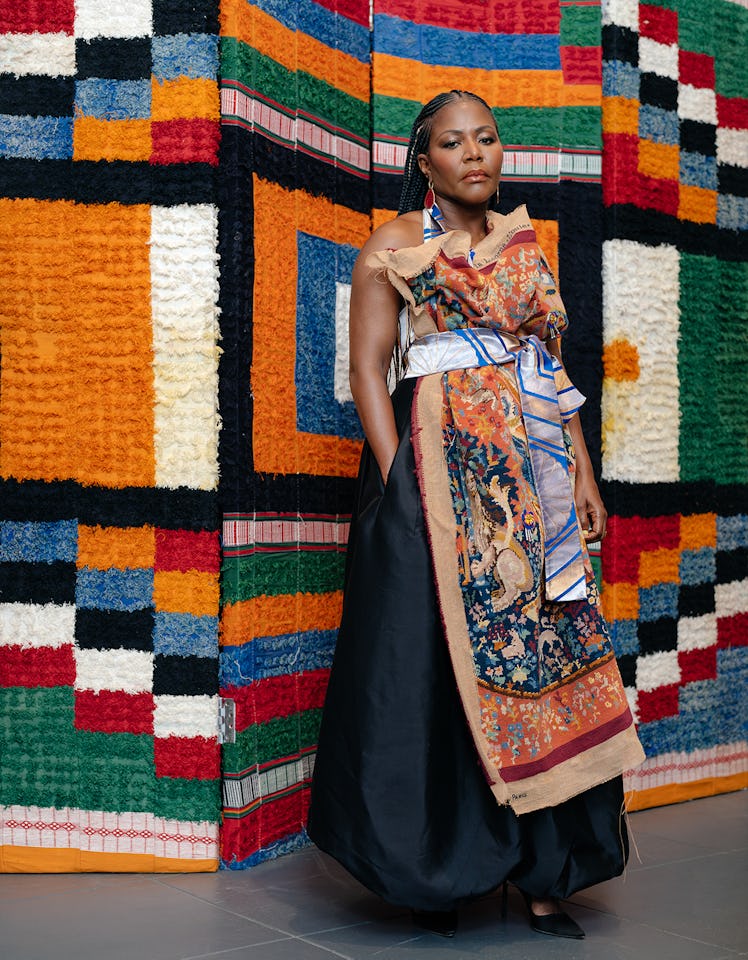Alára Founder Reni Folawiyo Is Bringing African Fashion to the World

For W’s annual The Originals portfolio, we asked creatives—pioneers in the fields of art, music, food, dance, fashion, and more—to share their insights on staying true to themselves. See this year’s full class of creatives here.
Alára, your luxury concept store in Lagos, Nigeria, is considered one of the world’s best boutiques. It’s often described as the Colette or the Dover Street Market of Africa. Do you find those comparisons complimentary, offensive, or fair?
I understand the connection: female founders, a strong and unique point of view, curated and presented with a focus on art and its interaction with fashion. But our mission is different: upliftment. I launched Alára in Nigeria in 2015 to redefine African luxury, both to Africans and to the rest of the world, mixing iconic international designers with leading and emerging African designers, and to demonstrate the parity in ingenuity and craftsmanship. So we put Saint Laurent, Simone Rocha, and Christopher John Rogers alongside Lagos Space Programme; Awa Meité, from Mali; and Thebe Magugu, from South Africa. And we have dared anyone to tell us that we shouldn’t!
It’s not just clothes but furniture, books, design objects, a restaurant, cultural programming.
Right, because what we are doing is not just selling things: We are selling our culture. We’ve clearly become an epicenter for cultural exchange for all kinds of creative people. In my native Yoruba language, alára means “wondrous performer, one who thrills endlessly”—that’s how we see African fashion and design, and how we want global audiences to experience it and embrace it.
What role did your family play in your desire to do what you do?
My mum taught in an art school, and my dad was a lawyer and university lecturer, so I grew up in a creative and intellectual world. I have four siblings with a combination of traditional and creative careers. I became a lawyer and got bored.
A lot of creative people cite boredom as a big motivator.
I taught myself to make furniture and then started a furniture factory that still exists. But I realized I wanted to be around creative people. I started to travel within Africa, and discovered people making fashion and design pieces that were contemporary iterations of what you see traditionally—not what we would call contemporary in the Western sense, but in our context. And I thought that was very intriguing.
Your annual design competition, Emerge Alára, has helped launch the careers of several African designers. What are you looking for when taking on rising talent?
Potential. A good ambassador for what we stand for. A point of view that we can relate to as Africans. And someone whose work can sit beside Saint Laurent. A good example is Adeju Thompson, the designer who launched Lagos Space Programme in 2018 and won the Woolmark Prize this year. He is someone we took under our wing. His brand is gender-fluid, and I love what he does with traditional indigo methods.
How do you choose which international fashion designers to include in the mix?
I learned to offer more classic designs from established luxury brands—like Saint Laurent and Christian Louboutin—to wear in combination with African designers. We give people what they know and then seduce them into thinking out of the box.
You brought an Alára pop-up to the Brooklyn Museum this summer, to coincide with the exhibition on African fashion. Most museum gift shops have one-size-fits-all jewelry, tote bags, and scarves, but this was a full boutique complete with dressing rooms for people to try on pieces by the likes of Thebe Magugu, Edas, and Tongoro. It definitely set a new bar.
We brought a lot of designers that hadn’t been seen or sold in the United States before, and a wide array of dresses, skirts, pants, tops, shoes, and so on. I’ve been surprised by how many garments sold out and how much we had to restock.
What’s next for what you’re calling Alára World?
Alára World is our new arm to extend our concept—both online and in person, in cities like Los Angeles and New York—outside of a museum context.
Are you at the dream, goal, or planning stage?
Goal-slash-plan!
Hair by Brittney Ward for Creme of Nature at See Management; makeup by Billie Gene for Dior Beauty at Opus Beauty; photo assistant: Rich Fazo; fashion assistant: Myra Morales.
This article was originally published on